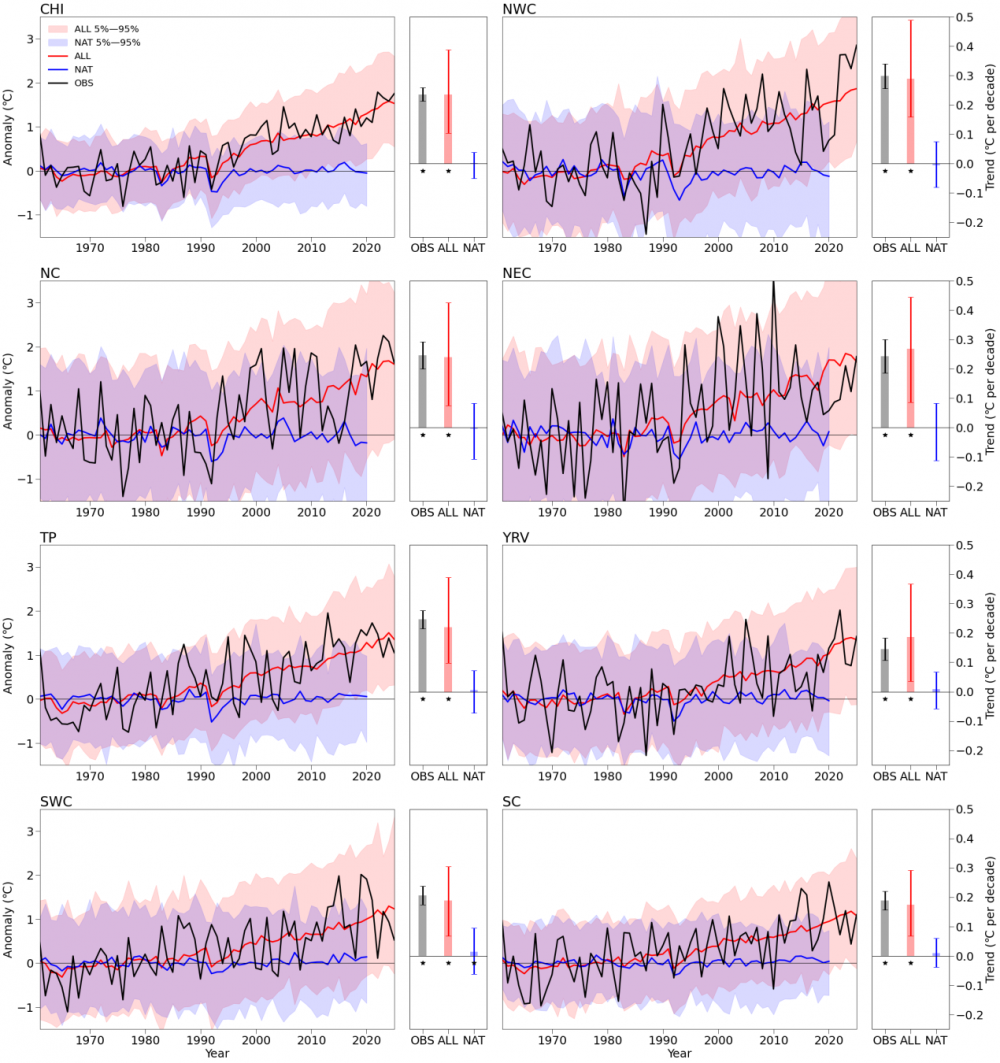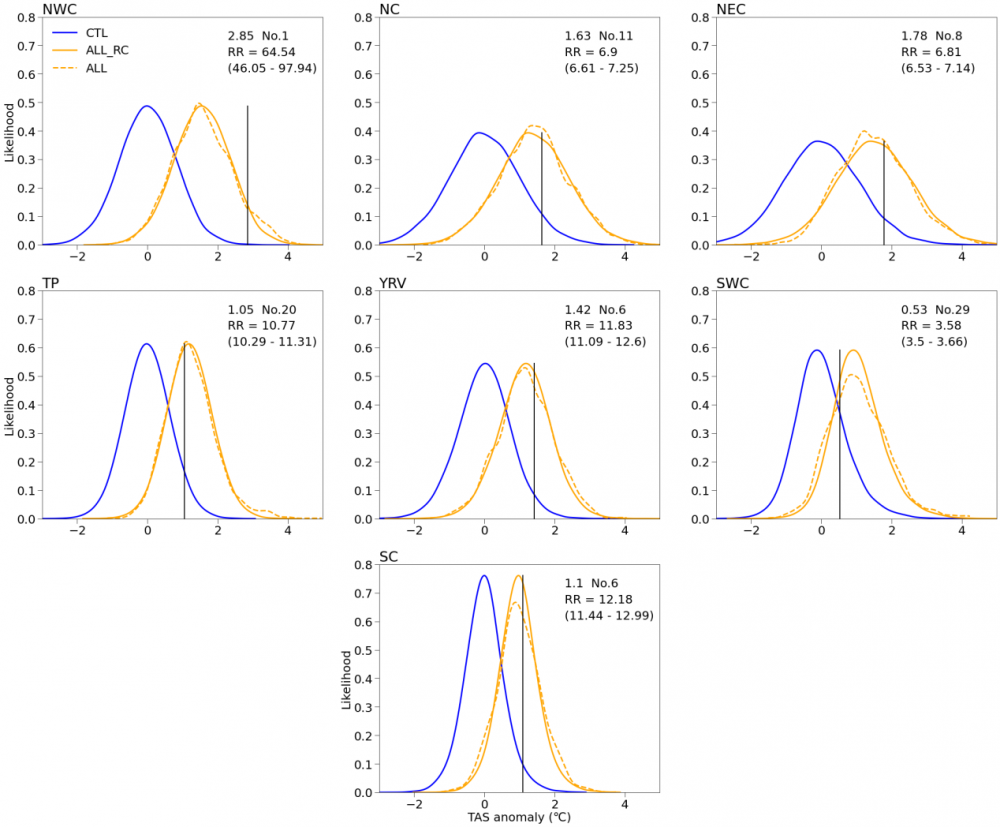Rapid Attribution of June 2025 Extreme Heat in China: Anthropogenic Influence Across Northwest, Middle-Lower Yangtze, and South
On July 5, 2025, the Beijing Climate Center released rapid attribution results for extreme high temperatures across China's seven climate regions in June 2025. The key findings are summarized below.
Observational data (Fig. 1) show that the June mean temperature in Northwest China was 2.85°C higher than the 1961–1990 baseline average (exceeding the mean by 4.7 standard deviations), setting a new record high since observations began. In the Middle-Lower Yangtze River Valley and South China, the mean temperatures were 1.42 °C and 1.10 °C above normal (exceeding the mean by 2.2 and 1.9 standard deviations, respectively), both ranking as the sixth highest on record. Meanwhile, North China, Northeast China, the Tibetan Plateau, and Southwest China experienced monthly mean temperature anomalies of 1.63°C, 1.78°C, 1.05°C, and 0.53°C relative to the 1961–1990 baseline average, ranking eleventh, eighth, twentieth, and twenty-ninth historically, respectively.

Fig. 1. Left: Observed (OBS) and CMIP6-simulated (ALL: all-forcing experiment, NAT: natural forcing only) June mean temperature anomalies (relative to 1961–1990, in °C) from 1961 to 2025 for China and its seven climate regions. Shading indicates the 5%–95% range of the multi-model ensemble. Right: Corresponding warming trends (in °C/decade). An asterisk (*) indicates a trend significant at p < 0.05; vertical lines denote the 5%–95% confidence intervals.
Region abbreviations: CHI: China, NWC: Northwest China, NC: North China, NEC: Northeast China, TP: Tibetan Plateau, YRV: Middle-Lower Yangtze River Valley, SWC: Southwest China, SC: South China.
Attribution analysis based on CMIP6 models (Figs. 1, 2) indicates that under the current climate state (2020-2030), human activities have increased the occurrence probability of 2025-like extreme high temperature events in Northwest China by 64.5 times (90% confidence interval: 46.1–97.9). For the sixth-highest extreme temperature events recorded in the Middle-Lower Yangtze River Valley and South China, anthropogenic influence raised the probability of such events by factors of 11.8 and 12.2, respectively (90% confidence intervals: 11.1–12.6 and 11.4–13.0). In contrast, high temperatures in North China, Northeast China, the Tibetan Plateau, and Southwest China were less extreme. Although human influence was present, its warming effect was partly offset by natural climate variability.

Fig. 2. Influence of human activities on the probability of June 2025 high temperature across China’s seven climate regions. Solid blue and orange lines represent the probability distributions under the current climate (2020-2030, 11-year window centered on 2025) for the all-forcing (ALL) and pre-industrial control (CTL) experiments, respectively. The orange dashed line indicates the reconstructed ALL distribution by combining the adjusted anthropogenic forcing response with the unforced internal variability. Vertical lines mark the 2025 June event thresholds. Annotations list the regional mean temperature anomaly (°C), historical rank, risk ratio (RR) of human influence, and its 5%–95% confidence interval.
These findings were generated using the rapid attribution prototype of extreme high temperature events developed by the Key Innovation Team on Climate Change Detection and Response of the China Meteorological Administration. The prototype employs a CMIP6-based response correction attribution method, which integrates model outputs and observational data through preprocessing and model pre-evaluation to establish an optimized operational framework suitable for rapid attribution. This prototype enables timely attribution of extreme high-temperature events across different regions, facilitating the assessment of anthropogenic influence shortly after an event occurs. Applications of the prototype to historical cases reveal that human activities have substantially increased the probability of extreme high-temperature events since the 1980s. Future projections further indicate a continued rise in the risk of extreme heat. Under current climatic conditions, record-breaking temperatures already observed in many regions are projected to become commonplace by the mid-21st century.
Research findings have been published in Advances in Climate Change Research: https://www.sciencedirect.com/science/article/pii/S1674927825001236











